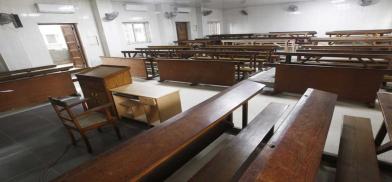Bangladesh extends school, college shutdown to Sept 11
The Bangladesh government has extended the shutdown of schools and colleges to Sept 11 because of the raging Covid-19 pandemic, even as a UNICEF report said over 40 million students from the pre-primary to the higher education level have been affected in the country following the prolonged closure of educational institutions

The Bangladesh government has extended the shutdown of schools and colleges to Sept 11 because of the raging Covid-19 pandemic, even as a UNICEF report said over 40 million students from the pre-primary to the higher education level have been affected in the country following the prolonged closure of educational institutions.
The education ministry issued a notice, announcing the time extension on Thursday.
Schools in Bangladesh have remained closed due to the pandemic since March 2020, dubbed as the second-longest COVID-19 school closure in the world by UNICEF.
In a new report, the UN agency said the longer children remain out of school, the less likely they are to return as they face increased risks of violence, child labor and child marriage.
The government has made several attempts to reopen schools but has been thwarted in their efforts by fresh waves of infections. As such students have not been able to return to classrooms in a year and a half.
Though there has been pressure from many quarters to reopen educational institutions, the government has said it is waiting for teachers and students to get vaccinated and for the pandemic to reach a ‘tolerable level’.
The government has announced plans to reopen schools several times but has backtracked in the face of a rising Covid-19 caseload.
“Schools closures and lack of in-person teaching and learning activities have an extremely serious impact, not only on children’s education but also on their health, protection and psychosocial well-being,” said Tomoo Hozumi, UNICEF representative in Bangladesh.
“Marginalised children are suffering the heaviest losses, which push them further into poverty and inequalities now and in the future,” Hozumi said.
Studies have shown that positive school experiences during this transition period are a predictor of children’s future social, emotional and educational outcomes, according to bdnews24.com.
UNICEF Bangladesh says it is working with the government towards safely reopening schools. This includes the development of guidelines, including safety measures such as children and teachers masking up and washing their hands with soap and water in school, the report said.
For an estimated eight million students, the wait for their first day of in-person learning has been over a year and counting, as they live in places where schools have been closed throughout the pandemic.
This number includes almost four million first-time learners from Bangladesh, where educational institutions have been closed since Mar 17, 2020, the agency said.
"As classes resume in many parts of the world, millions of first graders have been waiting to see the inside of a classroom for over a year. Millions more may not see one at all this school term. For the most vulnerable, their risk of never stepping into a classroom in their lifetime is skyrocketing."
In-person learning also enables teachers to identify and address learning delays, mental health issues, and abuse that could negatively affect children’s well-being.
Even now, many children are facing an unprecedented second year of disruption to their education.
The associated consequences of school closures – learning loss, mental distress, missed vaccinations, and heightened risk of dropout, child labor, and child marriage – will be felt by many children, especially the youngest learners in critical development stages.
While countries worldwide are taking some actions to provide remote learning, at least 29 percent of primary students are not being reached.
Together with the World Bank and UNESCO, the agency called for governments to focus on three key priorities for recovery in schools: targeted programs to bring all children and youth back in school, effective remedial learning to help students catch up on lost learning and support for teachers to address learning losses and incorporate digital technology into their teaching.
(SAM)








Post a Comment